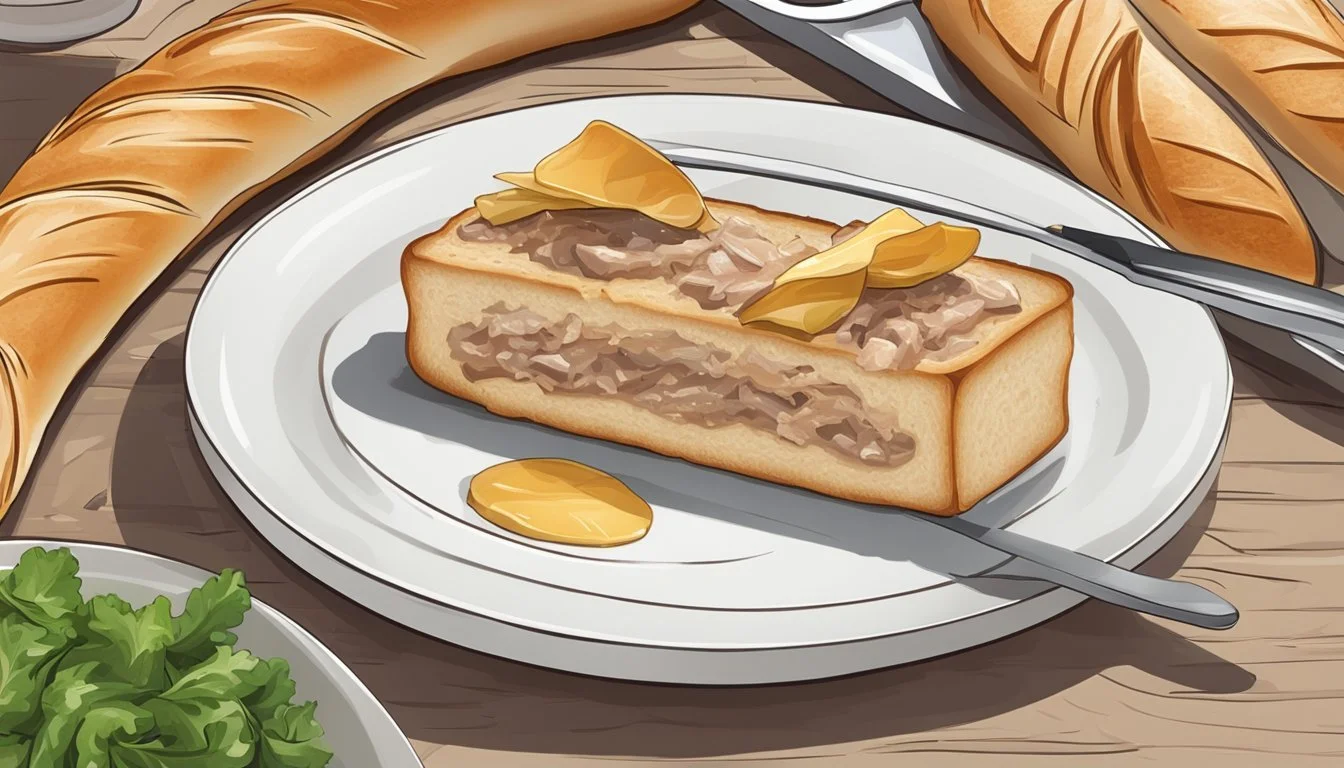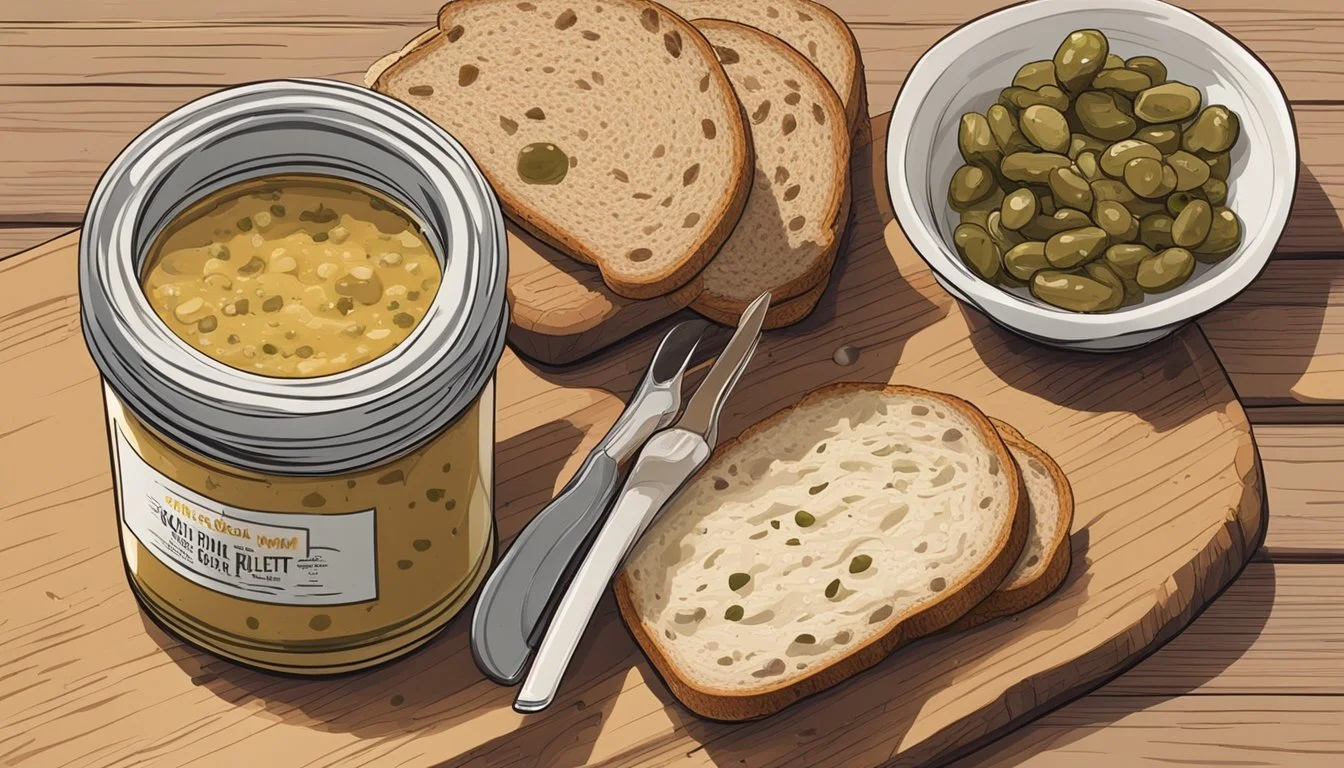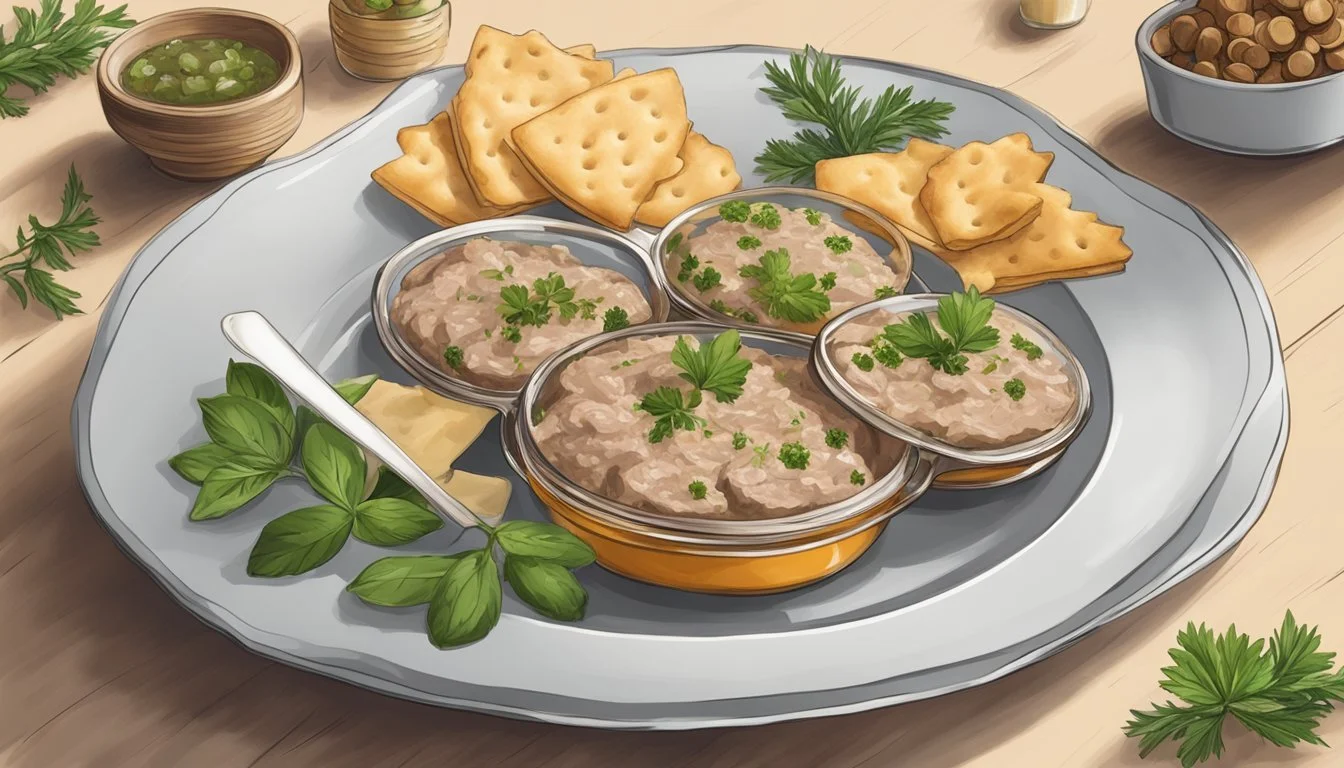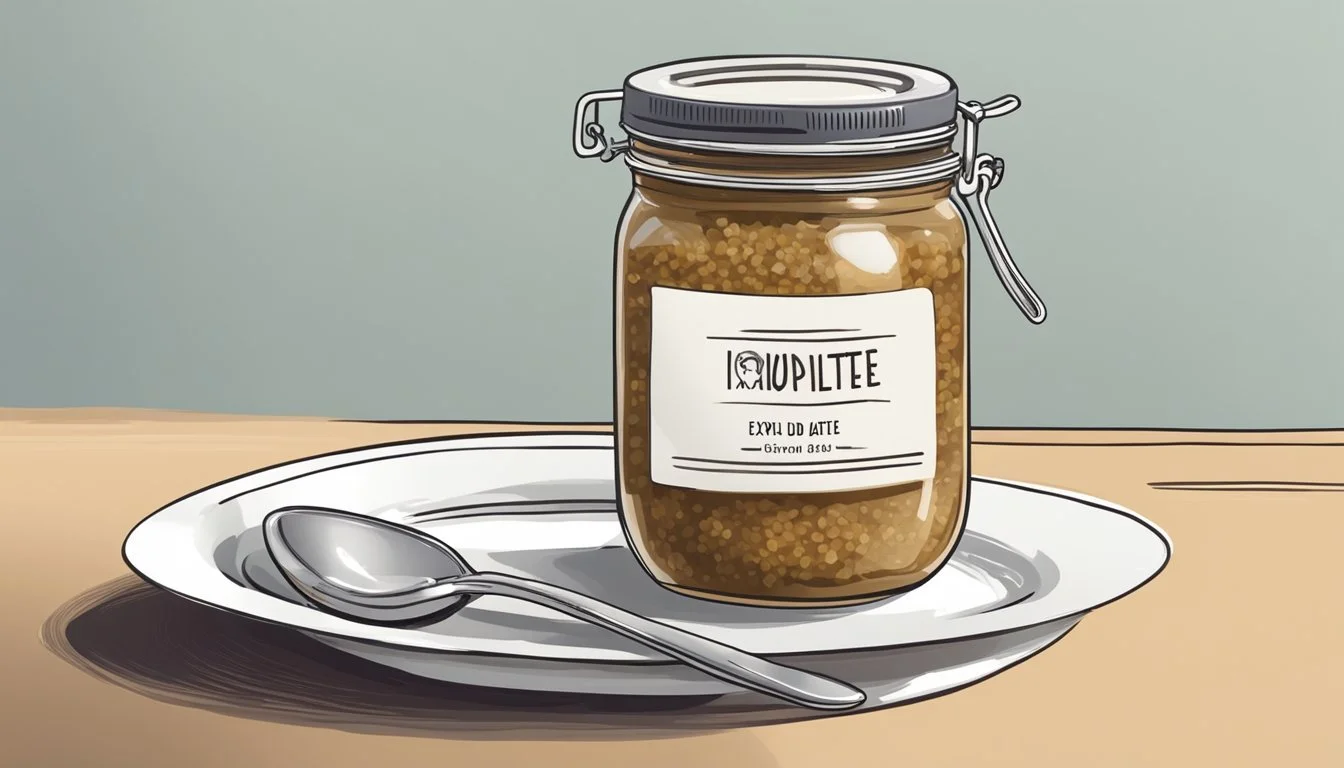How Do You Eat a Duck Rillette?
Unveiling the Best Techniques and Pairings
Duck rillette is a French culinary delight, often savored for its rich and delectable flavor. It consists of duck meat that has been slow-cooked until tender, commonly confited, and then shredded into a paste-like consistency. This decadent spread finds its roots in traditional charcuterie (What wine goes well with charcuterie?) and is served cold, typically as an appetizer or a casual snack.
One enjoys duck rillette spread on crusty bread or toast, allowing the bread to serve as a canvas for its robust taste. It can make an appearance at gatherings as part of a charcuterie board, accompanied by pickles, mustards, and other condiments that complement its savory nature. The layer of fat that sometimes tops the rillette isn't just for preservation; it adds an additional level of flavor and texture to the palate.
Part of the charm of duck rillette lies in its versatility. It can be simply served on bread or crackers, or incorporated into more elaborate dishes, offering a way to elevate the flavors of various recipes. The spread's indulgent and comforting essence has made it a favorite for those who appreciate the complexities of terrines and pâtés. Whether enjoyed in a casual setting or as a part of a gourmet meal, duck rillette remains a testament to the art of French charcuterie.
Understanding Duck Rillettes
Duck rillettes are a traditional French dish prized for their rich flavor and tender texture. They are often served as an appetizer or a light meal.
Historical Background
The creation of rillettes can be traced back to the 15th century in the Tours region of France. Originally made with pork, the technique was adapted to use duck meat, among other proteins. The process was designed as a method of preserving meat before refrigeration was available. By cooking the meat slowly in fat until it could be shredded and then packing it into containers topped with a layer of fat, it could be kept for an extended period.
Defining Duck Rillettes
Duck rillettes consist of duck meat that is seasoned, slowly cooked in its own fat, and then shredded or mashed to a spreadable consistency. Unlike duck confit (What wine goes well with duck confit?), which is whole pieces of duck preserved in its fat, rillettes are more pâté-like, where the meat is shredded and combined with fat to form a paste. Here's what typically goes into making them:
Primary Ingredient: Duck meat
Fat Used: Duck fat, sometimes supplemented with additional fat
Additional Ingredients: Spices, salt, sometimes a splash of stock for flavor
Texture: Fine, spreadable
The final product, duck rillettes, is traditionally cooled and set in a small pot or ramekin and can be spread on bread or crackers. It is known for its balance of savory, meaty taste with a rich, soft texture that comes from the combination of shredded duck meat and melted duck fat.
Ingredients and Preparation
This section provides details on the essentials for making duck rillette and insights into the various techniques and processes which are key to achieve the perfect texture and flavor.
Essential Ingredients
Duck: Primarily uses duck legs, rich in flavor and ideal for tender meat.
Fat: Duck fat is essential for the confit process and to create the creamy texture of the rillette.
Seasoning: A blend of kosher salt, black pepper, and dried thyme is used for the basic seasoning.
Preparation Techniques
Duck preparation: Duck legs are initially seasoned with a mixture that often includes salt, herbs, and sometimes spices.
Refrigeration: The seasoned meat usually needs to be refrigerated for a certain period, varying from a few hours to a full day, to allow the flavors to penetrate.
Cooking Process
Confit: Duck legs are slow-cooked in duck fat, on a low heat in an oven or stockpot, which results in tender meat.
Shredding: After cooking, the duck is allowed to cool slightly before it is shredded with a fork or wooden spoon.
Flavoring and Seasoning
Reinforcing flavors: Additional spices like ground cloves, ginger, nutmeg, and cinnamon can be added.
Aromatic touch: Bay leaves, garlic, and thyme are included in the cooking process for aromatic richness.
Additional Variations
Spirited variations: Some recipes incorporate Armagnac or brandy for depth.
Poultry alternatives: While traditional rillettes are duck-based, variations might include pork or goose.
Each aspect of the rillette making process, from careful selection of ingredients to the nuances of preparation and cooking, contributes to the final dish’s rich flavor and signature texture. It's often served chilled as a rustic appetizer, spread over crusty bread or crackers.
Storage and Preservation
Proper storage techniques are vital in maintaining the quality and safety of duck rillette. Attention to temperature and environment ensures the preservation of the rillette's texture and flavor.
Short-Term Storage
For short-term storage, duck rillette should be pressed tightly into a crock or ramekins and covered with a layer of duck fat. This fat layer acts as a sealant that helps to preserve the rillette and should solidify when refrigerated. It's best to store it in the refrigerator at a temperature below 40°F (4°C). Rillettes can remain in good condition for several weeks under these conditions.
Long-Term Preservation
For long-term preservation, duck rillette benefits from vacuum sealing when the goal is to freeze the product. When vacuum-sealed, duck rillette can be stored in the freezer for up to 18 months. This prevents freezer burn and avoids taste impairment. During thawing, the rillette should gradually be brought back to room temperature before serving to ensure the consistency remains spreadable.
Serving and Presentation
Duck rillette is a delectable spread made from seasoned, slow-cooked duck meat that is served chilled. Masterful presentation and proper accompaniments can elevate the experience of enjoying this classic appetizer.
Traditional Serving Suggestions
Duck rillette is traditionally served chilled or at room temperature to allow the flavors to shine. Rillettes are often portioned into ramekins for individual serving. It is spread thickly onto baguettes or crostini, making it an ideal starter.
Accompaniments
To complement the rich flavor of duck rillette, one may serve with pickled vegetables, such as cornichons, olives, or pickles to add acidity and cut through the fat. Dijon mustard can also be provided for its tangy heat.
Garnishing Tips
A garnish of fresh parsley or scattered thyme leaves not only adds a pop of color but also a subtle herby fragrance. A pinch of cayenne pepper can be sprinkled atop the rillette for those who enjoy a hint of spice.
Preparation for Serving
Prior to serving, ensure that the rillette is seasoned to taste with the right balance of salt and pepper. They should be taken out of the fridge ahead of time to reach the optimal temperature for serving, enhancing the spreadability and flavor profile.
Nutritional Information
Duck rillette is a type of preserved duck meat. It is often used as a spread on bread or crackers and is known for its rich and savory flavor. From a nutritional standpoint, duck rillette is calorie-dense, with a significant portion of calories coming from fat, specifically duck fat.
Calories and Fat Content: A standard serving size of duck rillette, which is 2 ounces (56 grams), typically contains around 220 calories. The majority of these calories, approximately 86%, are derived from fat. This high-fat content is chiefly composed of duck fat, valued for its taste and culinary uses.
Duck Fat: Duck fat is a type of animal fat that is higher in monounsaturated fats compared to saturated fats, similar in composition to olive oil. While duck fat is a source of fat that can contribute to the overall caloric intake, its monounsaturated fat content can be a preferable alternative to fats with higher levels of saturated fats.
Serving Suggestions: To enjoy duck rillette, it is generally spread on toast or used as part of a charcuterie board. Consumers should be mindful of the portion size due to its high caloric and fat content.
It is important for individuals who are monitoring their calorie or fat intake to consider the nutritional value of duck rillette when incorporating it into their diet.
Nutrient Amount per 2 oz serving Calories 220 Total Fat ~21g Saturated Fat Amount not specified Monounsaturated Fat Higher proportion, exact amount varies
Pairings and Combinations
To elevate the enjoyment of duck rillette, one must consider the harmony of flavors and textures that can be achieved through thoughtful pairings and combinations. The richness of the dish pairs well with certain types of wine, bread, and cheese, each enhancing the duck rillette's nuanced flavors.
Wine Pairings
White Wine: A well-chosen Chardonnay provides a refreshing contrast to the rich and fatty nature of duck rillette, cleansing the palate between bites.
Red Wine:
Pinot Noir: Light-bodied with a flurry of flavor, complements the smokiness of the duck rillette.
Young Dry Reds: Enhance the rich flavors without overwhelming them.
Bread Selections
The choice of bread to accompany duck rillette impacts the overall experience.
Baguettes: The classic French baguette, with its crispy crust and fluffy interior, serves as a sturdy vehicle for the rillette.
Crostini: For a crunchier texture, thinly sliced and toasted crostini provide an excellent contrast to the creamy consistency of the rillette.
Cheese Combinations
Cheese can add another layer of flavor to the rillette.
It is recommended to pair with milder cheeses that won't compete with the duck's robust profile.
Soft cheeses like Brie or Camembert work well, as they complement without overpowering.
Buying Guide
When selecting duck rillette, the consumer's focus should be drawn to the quality of ingredients and the reputation of the brands or labels available. These factors significantly affect the flavor and quality of the rillette.
Choosing Quality Ingredients
To ensure the rillette is of the highest quality, one must assess the freshness and source of the duck, which is the core ingredient. Duck should be free from any off-putting odors and have a supple skin. Fresh thyme, a key aromatic, should look vibrant and green with no signs of wilting, which indicates its freshness.
Duck: The meat should be sourced from a reliable provider, ensuring that it is fresh and properly processed.
Fresh Thyme: Look for bright, unwilted leaves as this herb greatly influences the flavor profile of the rillette.
Preferred Brands and Labels
Consumers are advised to research brands and labels that consistently receive positive feedback for the quality and flavor of their duck products. Labels that offer information on the sourcing and processing of the duck convey transparency and commitment to quality.
Branding: Be attentive to the reputation of the brand which can be indicative of the overall quality.
Labels: Certifications or labels indicating responsible raising practices can guide consumers to make informed choices that align with personal values around food sourcing.
Duck Rillette Variants
Duck rillette is a versatile dish that can be enjoyed in various styles. These variants are often influenced by regional preferences or the use of alternative meats, each offering a distinct take on this classic confit.
Regional Variations
In certain regions, duck rillette is enhanced with locally produced spirits such as Cognac or Armagnac, which impart a deeper flavor profile. These spirits are typically added during the cooking process to infuse the duck meat with their characteristic essences. For instance, a traditional French method involves slow-cooking the duck breast or leg in its own fat, seasoned with herbs, and then shredding it to create a spreadable paste.
French Duck Rillette: Often includes herbs like thyme and bay leaves, sometimes garlic, and typically Cognac.
Southwestern French Variant: Known for incorporating Armagnac and sometimes integrating bits of goose meat alongside duck.
Alternative Meats
Beyond duck, rillettes can be made from different types of meat, such as pork or goose. Each alternative meat provides its unique flavor and texture to the rillette.
Pork Rillette: A traditional variant that is similar in preparation to duck rillettes but utilizes pork cuts, resulting in a richer and more robust taste.
Goose Rillette: This variation has a stronger and more distinct game flavor compared to duck, often prepared following a similar method to duck rillettes but adjusted for the slightly higher fat content of goose meat.
Both types are often prepared through a process of slow-cooking the meat until tender, followed by shredding and mixing to create a homogenous paste, ready for spreading.
Homemade Duck Rillette Tips
Creating homemade duck rillette involves careful attention to technique, seasoning, and finishing methods to ensure a delectable spread. Here, we provide essential tips to enhance the rillette-making experience.
Cooking Techniques
When cooking duck for rillette, one can use the oven to slow-cook the meat, ensuring it becomes tender enough to shred. Consistency in heat is crucial; typically, the duck should roast covered at a low temperature, around 250°F (120°C), for several hours until the meat pulls away from the bones easily. A cooking vessel like a terrine is often used to shape and store the rillettes. After cooking, a wooden spoon proves to be the best tool for shredding the duck as it allows for more control and gentleness, preventing the meat from becoming pasty.
Seasoning Secrets
Proper seasoning is what gives duck rillette its distinctive flavor. Using salt judiciously to coat the duck meat before cooking helps in the curing process. Incorporating a bouquet garni during the cooking process infuses the duck with a subtle but complex array of flavors. Additionally, applying a well-balanced spice rub both inside and outside the meat can elevate the layering of flavors, making the rillette more aromatic and savory.
Final Touches
Once the duck is shredded and placed in a container, ladle a thin layer of fat over the top. This acts as a sealant to preserve the rillette and keep it moist. Adding a garnish of herbs before serving can enhance the visual appeal and give a fresh flavor contrast to the rich and creamy meat.
Common Mistakes to Avoid
Do not rush the cooking process. The long, slow cooking is essential for the meat to become soft enough to shred.
Avoid over-seasoning with salt as the meat will be curing for hours and the flavors intensify over time.
Don't let the rillette dry out. Use enough fat to cover which keeps it spreadable.
Be careful not to burn the spices when applying the spice rub, as this can create a bitter taste.
Food Safety Considerations
When enjoying duck rillettes, it's important to handle and store the product correctly to ensure both quality and safety. Refrigerate the rillettes promptly after purchase or preparation. They are recommended to be kept in the refrigerator at or below 40°F (4°C). For extended storage, pressing rillettes tightly into a jar and covering them with a layer of fat can help preserve the meat by creating an anaerobic environment that inhibits bacterial growth.
Serving duck rillettes safely requires attention to detail. One should avoid cross-contamination by using clean utensils and dishes when serving. If rillettes are left out at room temperature, say during a party or a gathering, they should not sit out for longer than two hours. This time should be reduced to just one hour if the ambient temperature is above 90°F (32°C).
Refrigeration & Shelf Life
Keep refrigerated: Below 40°F (4°C)
Store in an airtight container
Consume within 3-5 days for optimal freshness
Serving Safety
Serve with clean utensils
Avoid prolonged exposure to room temperature
Vacuum-sealed rillettes can last much longer, making them a convenient option for those looking to store the product for an extended period. When vacuum-sealed, they can be frozen and kept for up to 18 months. When ready to serve, thaw the rillettes in the refrigerator to maintain safety and quality.
Following these guidelines will help ensure that one's experience with duck rillettes is enjoyable and safe from foodborne illnesses.
Frequently Asked Questions
What is duck rillette? Duck rillette is a form of pâté made from seasoned duck meat that is cooked slowly in fat and then shredded for a spreadable consistency.
How should one prepare duck rillette? One typically begins by seasoning duck legs with a blend of herbs and salt before cooking them slowly in their own fat. After cooling, the meat is shredded and packed into containers, with the cooking fat poured over to seal and preserve the rillette.
What is the best way to serve duck rillette? Duck rillette is most commonly served at room temperature. It can be spread on bread or toast and is often accompanied by pickles or a spread of mustard. In finer settings, it may be presented as part of a charcuterie board.
Serving Suggestion Description On Bread Spread on crusty baguette or toast Accompaniments Pair with pickles, mustard, or chutney Charcuterie Board Include with other meats and cheeses
Can duck rillette be stored, and if so, how? Yes, duck rillette can be stored by covering it with a layer of fat to prevent oxidation and then refrigerating. Properly sealed, it can last for several weeks.
For storage:
Refrigeration: Store in the fridge for up to 4 weeks.
Freezing: For longer storage, one can freeze rillette for several months.
Fat Cover: Ensure the meat is completely covered by fat to maintain freshness.
Remember to let the rillette reach room temperature before serving to enhance its flavors and texture.
Conclusion
Duck rillette is a French culinary delight, revered for its rich flavor and versatility. It is commonly served as a spread on toast or crusty bread. For an appetizer, duck rillette can be paired with pickles and mustard, drawing out its savory notes. If one is inclined towards a lighter fare, it can be part of an elegant salad, adding depth to greens and vinaigrettes.
When hosting, presenting duck rillette as part of a charcuterie board elevates the dining experience. The spread can be complimented by a selection of cheeses, fruits, and nuts, creating a balance of textures and flavors to indulge the palate.
In terms of storage, rillette should be covered and refrigerated, ensuring it is consumed within the appropriate time for freshness. Before serving, one should allow it to sit at room temperature to soften, enhancing its spreadability and flavor profile.
For a main course, one might warm the rillette and use it to top off a dish, adding a savory dimension to root vegetables or a rustic potato mash. Regardless of the presentation, duck rillette remains a staple in fine cuisine, providing a taste that is both authentic and timeless.








